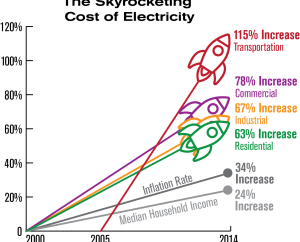As the world continues to search for alternative fuel sources to satisfy its insatiable hunger for energy while reducing its reliance on petroleum products, another source may be in a surprising place: the sounds that surround us.
Sound energy studies have been ongoing for a long time, but the use of sound as an energy source is still in its infancy. This article will examine what sound energy entails, its different purposes and its practicality as an elective Reliant Energy source.
What is sound energy?

There are different types of energy and sound energy is the result of the vibrations of sound waves. Be that as it may, how does it happen? When a disturbing influence causes an object or substance to vibrate, the energy emitted by the vibration travels through the object in the form of sound waves. The vibrating element or substance must be strong, fluid or gaseous.
Something as basic as moving your hands in a substance like air would cause an adequate number of vibrations causing sound waves. The sound waves emitted by these methods are not to the point of being heard by people, however, the rule is no different for the sound waves that our eardrums can hear. The vibrations cause particles in the substance to meet and shock upon impact which causes the development of sound waves.
There are two basic types of waves: longitudinal (or pressure) waves and cross waves. Longitudinal waves are formed when waves move in a pattern similar to that of the energy that follows the substance. The regions where the waves shrink the most are called compressions; those regions where the waves are more diffuse are called rarefactions.
The vibrations that these sound waves produce are perceived by our ears, which then, at that moment, perceive them. For the human ear to identify a sound vibration, it must move between 20 vibrations per second and 20,000 vibrations per second. More sound vibrations every second show a higher-pitched sound. These sound vibrations are estimated in Hertz, which means the recurrence of a sound.
Be that as it may, the clamour of a sound is measured in decibels (dB), with a typical discussion around 60 dB.
How is sound energy used?
However, the consideration of sound energy as a potential exchange with other energy sources is a somewhat new feature, there are cases of sound energy that we have been using for some time for fundamental exercises.
An illustration of the energy of sound was added to save lives. When pilots rescue a drifting plane with engine problems, they can generate a small unstable load that transmits sound energy.
A little unstable it ventures large numbers of meters into the depths of the sea, as it gets trapped in the deep sound channel, known as SOFAR or Sound Fixing and Ranging Channel. Then the sound can be obtained from extraordinary devices at sea and the area of the downed pilot is determined, allowing him to be rescued.
Another example of sound energy comes naturally to many of us: the use of ultrasound. Ultrasounds consist of extremely high-recurrence longitudinal waves that can be used to separate nerve and kidney stones. It is also commonly used for clinical imaging purposes during a woman’s pregnancy.
The third illustration of sound energy not regularly connected with people: is echolocation. Creatures such as dolphins, whales, and bats are known to use echolocation to help them explore and chase. These animals transmit sound waves from objects and return to them as reverberations, showing them where prey or obstacles are in their path.
However, did you have any idea that some people also use echolocation? Some visually impaired and outwardly debilitated people do this by clicking their tongues or hitting them with sticks. The sound waves they produce break up objects and illuminate them on their area, size and surface.







